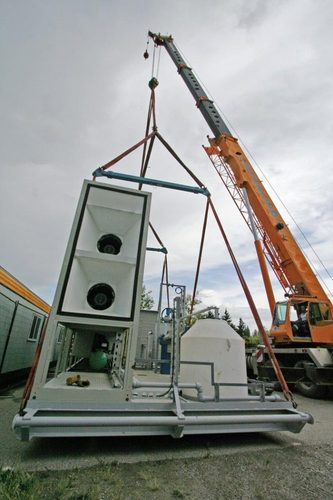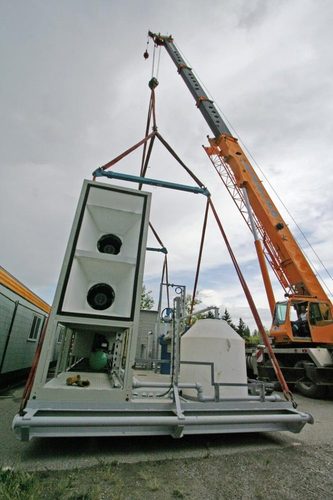
This machine sucks carbon out of the air like a Ghostbusters beam snarfing up ectoplasm. The idea is that if we can build millions of these babies, and find a good place to stick the carbon they capture, we can start to bring down Earth's already-dangerous levels of atmospheric carbon dioxide.
The technology at the core of the device is not new. "People have done this for a long time," [says David Keith, inventor of the device]. "There were commercial processes that took CO2 out of the air, in fact, in the 1950s, so there's no mystery that we can do it."
Keith says taking tens of thousands of tons of CO2 out of the air every year "isn't as hard as you think."
Skeptics disagree, and argue that so-called "air capture" of carbon dioxide will never be economically realistic. But Keith is sanguine about their objections, and argues that if no one is pushing the envelope on this technology, we'll never find out just how inexpensive we can make it.
"I've spent 20 years of my life trying to figure out how to help solve the climate problem," he says. "I work on lots of different technologies. I don't believe any one is the silver bullet. But I do believe we need to have a larger set of potential solutions to deal with the climate problem, none of which will be perfect, none of which we understand very well, but we do a better job if we have more options on the table."
Of course, as with any carbon capture scheme, there’s still an open question of what you do with the carbon once you’ve got it. (Take that Ghostbusters analogy one step further: You’ve got your bank of stored carbon containers, then Dickless comes in and flips a switch, and BAM.) But getting it out of the air is a pretty good first step.




